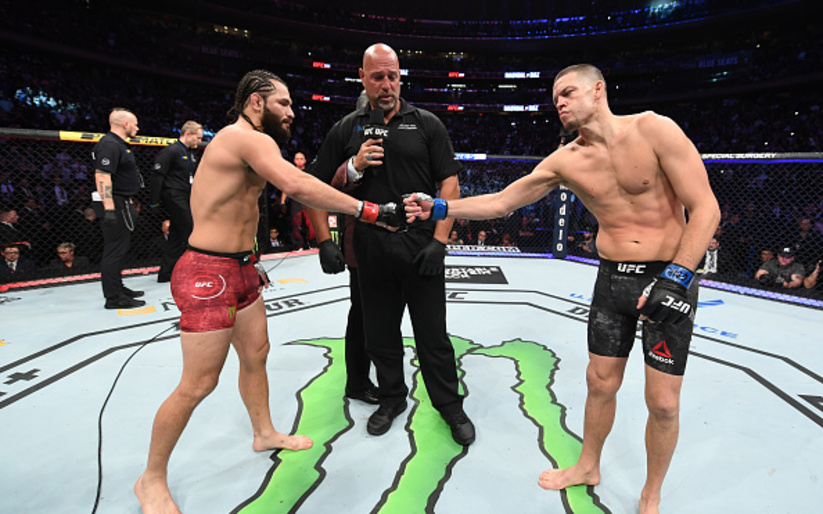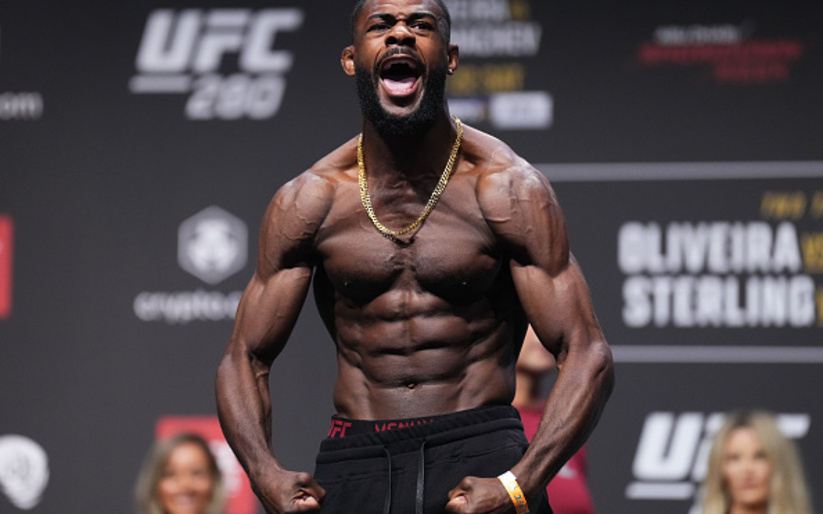UFC Vice President of Athlete Health and Performance (i.e. UFC drug czar) Jeff Novitzky appeared on the Joe Rogan Experience to talk all things UFC and doping. Among many talking points, Rogan asked about the “randomness” of the UFC’s testing. Novitzky’s response (transcribed by MMA Junkie; appears around the 2:13:00 mark in the video):
“It’s not random testing; it’s intelligent testing. USADA’s not going to say, ‘Hey, we’re going roll the dice and whoever comes up …’ They’re going to look on everything, from tips that they may get – hell, they’ll even look at physical appearances of athletes. Does this athlete pass kind of the physical appearance ‘smell test,’ and if they don’t, hey, maybe we need to test that person a little bit more.”
…
“This is strictly another tool to be used,” he said. “It doesn’t mean that an athlete who doesn’t pass the smell test will test positive, but a lot of times, it does. All is means is a test. It doesn’t mean a person is positive because you look like you did. But hey, maybe an extra test or two.
“If I was that athlete, that freak, I would be like, ‘Hey, test me more, because people are accusing me of it, so it will be cool at the end of the year, everybody will look at my stats on the webpage and I was tested 10 times and no positive tests.'”
Let’s get one thing out of the way: Novitzky is referring to the eyeball test. Or at least that’s what I assume he is referring to anyway, unless he’s gonna be sniffing around nuts and ovaries for testosterone production.
There are two major concerns I have with this quote.
1. Is the testing not random at all, or did Novitzky simply mean that the “random” tests will be biased in some way? Simply adjusting the odds that a specific fighter or a group of fighters will be tested in a given time frame does not preclude it from being “random.”
For instance, let’s say I’m playing a game where I try to draw a black card from a deck of cards. It’s a dumb game, but bear with me. If I play with an unaltered deck of cards, my odds of drawing a black card are .5. If I decide to take out all the hearts from the deck, my odds suddenly improve to .67. But the actual draw of the card is still random. The odds have just changed.
The distinction is important, because Novitzky’s quote could be interpreted to mean that they will target fighters who “look” like they’re on steroids. And targeting certain fighters, testing them specifically because of some criteria, is when the tests stop being random.
2. We all know what Novitzky means when he talks about a fighter “looking” like they’re on steroids means: it’s means a fighter big, bulky, ripped muscles.
But look at Cage Potato’s list of steroid failures, and you’ll find a lot of names with less than impressive physiques: Josh Barnett, Tim Sylvia, Hermes Franca, Ruben Villareal, Chris Leben, Kirill Sidelnikov, Josh Barnett again, Rafael Cavalcante, Joey Beltran.
It’s not faulty to look at a big, bulky, ripped athlete and think he or she may be on something. The faulty thinking is assuming that another professional athlete isn’t on anything because they don’t share the same physique.
As Novitzky (and other anti-doping zealots) says, however, you shouldn’t worry if you don’t have anything to hide. A clean athlete should welcome additional testing to further prove his or her clean credentials.
But Google “WADA false positives,” and you’ll find a story about a Malaysian lab that messed up the tests of an Egyptian soccer player and American marathon runner; a Spanish lab that contaminated a clean athlete’s urine with one who had taken a banned substance; a Brazilian lab that mistakenly reported a beach volleyball player.
You’ll also find a story about an article posted in the journal of the American Statistical Association. The article discusses a falsely accused Estonian cross country skier, and questions the scientific rigor of WADA and other anti-doping agencies. One of the article’s authors goes as far as saying WADA doesn’t “understand or appreciate the scientific method.”
The implications for fighters should be obvious. A clean fighter may be tested 10 times because his or her physique fails Novitzky’s smell test. What’s the rate of WADA labs returning false positives? There appears to be no concrete information publicly available. But if we play around with the numbers we see that a 99.99% success rate leaves a 1-in-1000 chance a fighter produces a false positive over the course of a year; 99.9% drops that down to 1-in-100; and 99% to 1-in-10 and so on.
Now, let’s say our clean fighter tests positive for a “non-specified substance” like anabolic steroids or growth hormones or one of the various other performance enhancing drugs. That fighter is given a minimum two-year suspension. Should the fighter appeal, the suspension would not start until the resolution of the appeal. This differs from local athletic commissions, which set the suspension date retroactive to the collection of the sample (I believe). Assuming the UFC will not offer or promote fights for a fighter appealing a test failure, the effective suspension length is two years PLUS the length of time to file and fulfill an appellate hearing.
Novitzky and the UFC have said the fighters – or the clean fighters anyway – have clamored for a comprehensive drug policy. Perhaps that’s true. But is this specifically what they wanted implemented? Do they want to subjected to more tests based on their body type? Do they want suspensions delayed until conclusion of the final hearing? Do they want an IV ban? These all seem like policies that a strong collectively bargaining voice would fight against.



